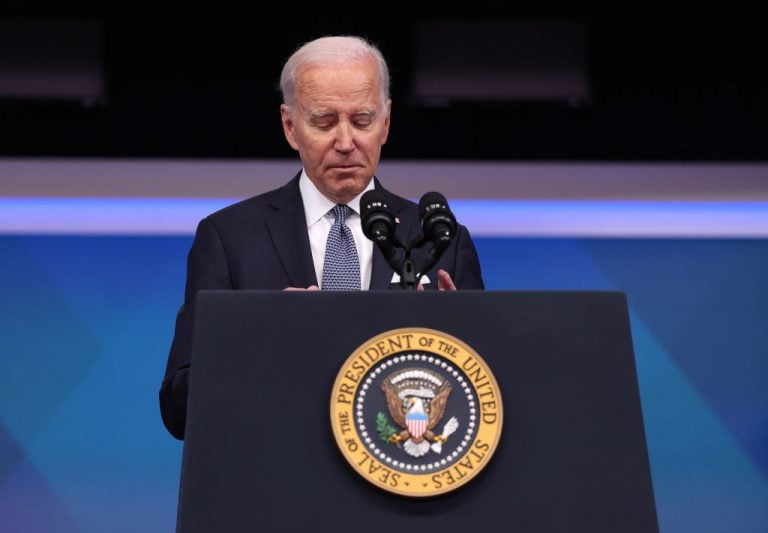Labor Department Report Finds Pandemic Unemployment Program Had a Staggering 36 Percent Improper Payment Rate
August 23, 2023
On August 21, the US Department of Labor (DOL) released its long-awaited “improper payment report” on the troubled Pandemic Unemployment Assistance (PUA) program. PUA was an unprecedented federal unemployment benefit program that operated from early 2020 through September 2021. Prior reports from the DOL Inspector General and the Government Accountability Office suggested that PUA was subject to historic, but previously unconfirmed, levels of improper payments and fraud.
The following are key takeaways from DOL’s nine-page report:
1. PUA had a staggering 35.9 percent improper payment rate.
PUA’s nearly 36 percent improper payment rate includes 17.0 percent of PUA payments known to be overpaid, along with 17.4 percent that “could not be determined as valid” including because “proper documentation was not collected or retained to back up the payments.” Almost two years after PUA ended, it is deeply troubling that “there is insufficient evidence” to “determine the validity” of over one in six PUA payments.
2. The report provides only improper payment rates, and no new data on the massive number of individuals affected and taxpayer dollars lost.
Key details about PUA are still unknown, and the report is notably silent on the number of individuals associated with improper payments. But we know PUA peaked at an apparent 15.2 million recipients in August 2020. (The number of recipients is “apparent” because many claims were fraudulent, among other reasons.) With that caveat, DOL’s reported 35.9 percent improper payment rate suggests 5.4 million individuals were paid improperly then—or more than the combined populations of Chicago and Houston. That includes nearly 2.6 million who received overpayments and another 2.6 million whose eligibility cannot be confirmed. Many were victims of identity theft, with criminals using their credentials to fraudulently obtain benefits. Even these massive figures are only partial, since they reflect improper payments at one point in time, and not throughout the program’s operation.
The report also fails to spell out the value of the resulting improper payments. DOL separately reports that PUA has paid $133.7 billion in benefits. The combined 34 percent of PUA directed to overpayments or payments lacking documentation indicates some $46 billion in improper payments due to those causes. However, that would significantly understate total losses for taxpayers due to PUA misspending, since PUA recipients also received federal Pandemic Unemployment Compensation (PUC) supplements. PUC added $600 (and later $300) per week to PUA checks, suggesting that total PUA-related misspending—that is, including PUC supplements—is likely far above that $46 billion estimate.
3. The high improper payment rates likely understate misspending in the program’s critical early months.
As the report notes, PUA claims—and likely improper payments—fell sharply after December 2020 reforms required identity and employment verification. Therefore, it is likely that, during the program’s critical early months of operation, PUA improper payment rates were higher than the 35.9 percent average the report finds across the entire program, which operated until September 2021. That is consistent with a September 2022 report from the DOL Inspector General, which found a combined 42 percent improper payment rate for PUA and PUC during those programs’ first six months of operation in four states.
4. DOL tries to deflect blame for PUA misspending on “the previous administration.”
The report notes that “during the previous administration, state UI systems were overwhelmed by record numbers of claims amidst an unprecedented increase in unemployment triggered by the public health crisis.” The report also refers several times to PUA misspending “in 2020” or during “the first nine months” of the program—similarly suggesting the Trump administration was to blame. While most PUA spending and improper payments indeed occurred in 2020, the report notably fails to identify the actors most responsible for the program’s serious flaws—Democrats in Congress who created it.
In mid-March 2020, senior Senate Democrats including Majority Leader Chuck Schumer (D-NY) and Finance Committee Chairman Ron Wyden (D-OR) introduced the “Pandemic Unemployment Assistance Act,” which proposed creating the PUA program. That legislation was included almost verbatim in the CARES Act enacted a few weeks later. Schumer hailed what he termed the new “UI on steroids,” including the PUA program he rightly said he “conceived.” Key program flaws, such as allowing claimants to self-certify their eligibility and not requiring identity and work verification, were recognized almost immediately. Senior Republicans proposed needed reforms in July 2020, yet Congress failed to act until December 2020.
As its release deep in Congress’ August recess suggests, this report indicates significant defensiveness over the extraordinary failings of the PUA program. That shouldn’t surprise, given the program’s central—and still only partially understood—role in the greatest theft of tax dollars in American history.
Sign up for AEI on Poverty
A newsletter highlighting work on poverty–and efforts to reduce it–from AEI’s Poverty Studies team



